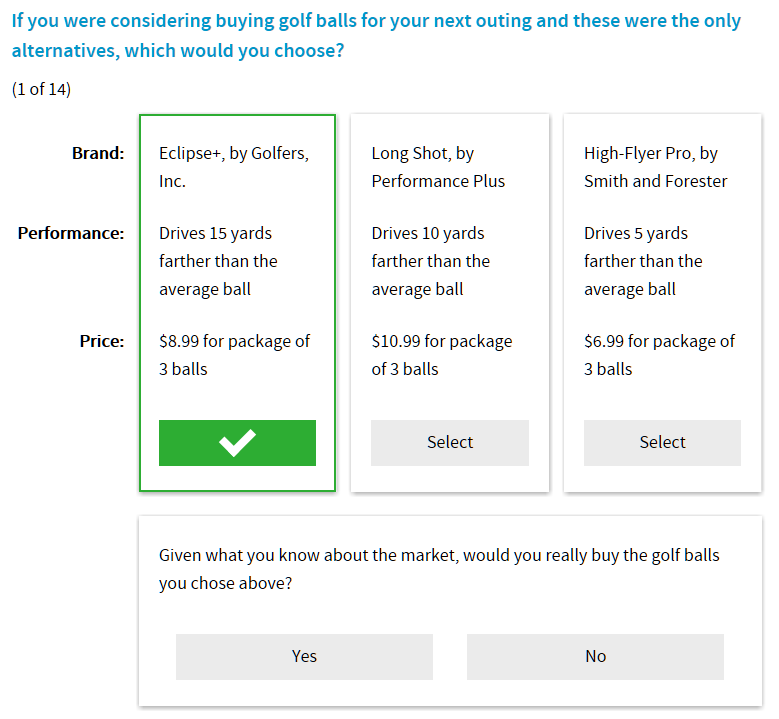Choice-based conjoint questions can be designed to have a "None" option, sometimes referred to as the constant alternative. It is argued that including a None option in CBC tasks mimics the real world, since buyers are not required to choose products that don't satisfy them. The None option can also be used to reflect a status quo choice, such as "I'd continue to use my current long-distance service provider."
CBC gives you the option of including a None option in the questionnaire. If the None option is present, a separate logit utility weight is computed for the None parameter (if using logit, CBC/HB, or latent class analysis). The more likely respondents are to choose None relative to product concepts, the higher the utility of the None option. The None parameter can be used in market simulations to estimate the proportion of respondents that would not choose any of the simulated product concepts.
In general, we recommend including None in CBC questionnaires, but paying less attention to (or completely ignoring) it in market simulations. The propensity to choose None can be a telling measure when comparing groups or individuals. We suggest that percent of Nones in Counts or simulations be viewed in a relative rather than an absolute sense.
The use of the "None" concept in partial-profile CBC studies (only supported by the Advanced Design Module for CBC) is problematic. The None weight varies significantly depending on how many attributes are displayed in the partial-profile task.
Dual-Response None
Some researchers have advocated asking the "None" choice as a second-stage question in discrete choice questionnaires (see "Beyond the Basics: Choice Modelling Methods and Implementation Issues" (Brazell, Diener, Severin, and Uldry) in a 2003 ART/Forum Tutorial, American Marketing Association). You can specify the dual-response None layout by selecting it as the None Option from the Design tab. Using this option does not complicate analysis, as the software handles this more sophisticated application of the None automatically.
The "Dual-Response None" approach is as follows. Rather than ask respondents to choose among, say, four alternatives {A, B, C and None}; respondents are first asked to choose among alternatives {A, B, and C}, and then next asked if they really would buy the alternative they selected in the first stage (yes/no).

The dual-response None dramatically increases the propensity of respondents to say "None," which many researchers would argue better reflects actual purchase intentions than when the "None" is asked in the standard way. But, no information is lost due to the selection of the "None," since respondents are first asked to discriminate among available products. Thus, the "Dual-Response" none can provide a "safety net": we can estimate a "None" parameter without worrying about the potential decrease in precision of the other parameters if the incidence of "None" usage is quite high.
The dual-response None has its drawbacks. It adds a little bit more time to each choice task, since respondents must provide two answers rather than one. But, the additional time requirement is minimal, since respondents have already invested the time to become familiar with the alternatives in the choice task. It is also possible that asking the "None" as a separate question may bias the parameters of interest, though this has not been shown in practice to the best of our knowledge.
Brazell et al. have suggested that the benefits of the dual response seem to outweigh any negatives. They have conducted split-sample experiments with respondents that demonstrate that the parameters (other than the "None") are not significantly different (after adjusting for scale) when using the standard "None" vs. "Dual-Response None" formats.
For details regarding estimation of part-worth utility parameters with dual-response None in place, see the CBH/HB manual.